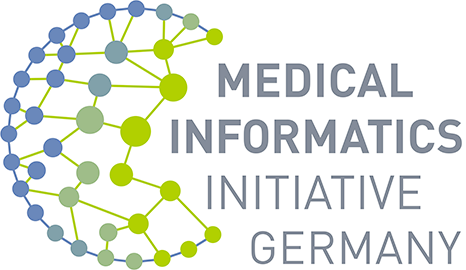Consolidating patient-oriented clinical data
Patients often visit multiple doctors and hospitals. However, medical professionals are not always informed of the latest treatments or diagnoses made by their peers on other premises. Where the patient has given informed consent, relevant data will be consolidated digitally. This will provide doctors with a better, more complete picture of the patient’s situation and the progression of their illness. The result will be improved treatment and increased patient safety – because diagnoses will be faster and more precise, an unnecessary second examination can be avoided, and unwanted side effects from medication prevented, for example.
Establishing the IT framework for tailored treatments
For the best results, it is vital to choose the right therapy for the specific patient. New technologies enable increasingly personalised patient characterisation. And this, in turn, allows medical professionals to determine the best approach to treating the patient prior to starting the therapy. These highly tailored treatments have the potential to raise success rates and curb side effects. However, this requires doctors to be adept at managing large volumes of data. In addition, it entails the analysis of patient data in the context of systems medicine, to lead to reliable insights and clear treatment choices. Against this background, methods from clinical epidemiology, medical statistics and biometry, and bioinformatics must be leveraged to develop corresponding evidence-based decision support systems.
Acquiring insights from patient data
Data generated from routine clinical practice in Germany are rarely used for research. And yet combining data sets from research (e.g. biobanks, genetic databases, data from studies) and patient care can reveal correlations – between genes, lifestyles, diseases or complications, for instance. The combined use of data fuels innovation in diagnostics, treatment and prevention. In addition, large sets of clinical data may help doctors to quickly recognise rare complications, risks and side effects, for example from drug therapies. Plus, more data are available for researching rare diseases.
Making new findings immediately available for patient care
Currently, it often takes too long to apply proven scientific findings to patient care. In many cases, recently acquired knowledge is not universally available to inform treatment decisions. Therefore, a key aim of the medical informatics initiative is to help ensure verified research findings are quickly brought to the bedside.
Strengthening medical informatics in Germany
Growing volumes of data can only be effectively analysed with the aid of specialised data scientists – who wield state-of-the-art informatics tools, and are familiar with medical terminology. Consequently, the medical informatics funding scheme will strengthen data science education for the up-and-coming generation of scientists. In all, medical informatics in Germany is to be positioned as a progressive field in research, education and training – and that entails a focus on the future. As an incentive to create new professorships, BMBF will fund junior research groups at universities that commit to establishing these positions.


